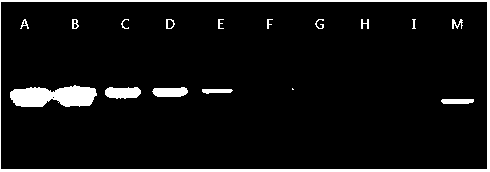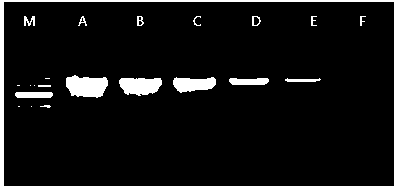Multiplex PCR-based synchronous and rapid method for detecting 13 pathogenic microorganisms in water
A technology of pathogenic microorganisms and detection methods, which is applied in the determination/testing of microorganisms, biochemical equipment and methods, and resistance to vector-borne diseases, etc., and can solve the problem of lower sensitivity and specificity of primer target sequences, non-specific products, and amplification failure and other problems, to achieve the effect of simple operation, strong specificity and strong stability
- Summary
- Abstract
- Description
- Claims
- Application Information
AI Technical Summary
Problems solved by technology
Method used
Image
Examples
Embodiment Construction
[0026] 1. Detection object
[0027] This method is mainly aimed at 13 kinds of pathogenic microorganisms that may exist in the water and may enter the water when public emergencies occur, namely: Escherichia coli, enterohaemorrhagic Escherichia coli O157:H7, Legionella pneumophila, Salmonella enteritidis , Shigella, Staphylococcus aureus, Listeria monocytogenes, Helicobacter pylori, Mycobacterium tuberculosis, Klebsiella pneumoniae, Vibrio cholerae, Bacillus anthracis, Yersinia pestis.
[0028] 2. Detection process
[0029] 2.1 Water sample treatment
[0030] Collect an appropriate amount of water samples, package them in sterile plastic bottles, and send them to the laboratory on the same day. After standing at room temperature for 1h~2h, take the supernatant and add it to the funnel of the filter funnel device of the Milliflex Plus microbial filtration system. Turn on the concentrator to concentrate and collect bacteria for 3 minutes. After the concentration is completed...
PUM
 Login to View More
Login to View More Abstract
Description
Claims
Application Information
 Login to View More
Login to View More - R&D
- Intellectual Property
- Life Sciences
- Materials
- Tech Scout
- Unparalleled Data Quality
- Higher Quality Content
- 60% Fewer Hallucinations
Browse by: Latest US Patents, China's latest patents, Technical Efficacy Thesaurus, Application Domain, Technology Topic, Popular Technical Reports.
© 2025 PatSnap. All rights reserved.Legal|Privacy policy|Modern Slavery Act Transparency Statement|Sitemap|About US| Contact US: help@patsnap.com



